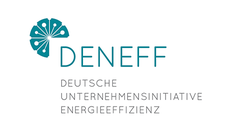Barriers to and drivers for industrial energy management program investment decision-making
Panel: 5. Business models, finance and investment in the age of digitalisation
Authors:
Aida Sa, Politechnico di Milano, Italy
Majid Rafiee, Sharif University of Technology
Abstract
Global demands are forcing manufacturing industries to develop their energy programs by increasing efficiency and lowering environmental impacts. Energy management has therefore played a key role in industrial energy efficiency in recent years. However, still there are problems at very first step of energy management programs which is decision making. The reason can be explained through market and non-market failures. Another essential reason can be explained through how an energy program is characterized by top managers. Managers are positioned in a place to make strategic decisions. Therefore, any program including energy management programs should have both financial and strategical value for the company. Keeping in mind the adoption of energy investment through conformation with financial analysis and organization’s contextual factors together with characteristics of energy management program as two macro perspectives in energy efficiency literature, this paper aims to understand the main driving factors which lead to either positive or negative energy investment decision making for a particular energy management program. The investigation has been conducted as a multiple case study involving 15 manufacturing companies of varying size and in different sectors located in Sweden. Having the results from studied cases, enabled the authors to develop a taxonomy of drivers and barriers for industrial energy management investment decision making. The most relevant and pronounced barriers to and drivers for negative and/or positive investment decision making through the studied cases are: access to capital, time and expertise, awareness and uncertainty, practice characteristics, risk and Industry’s complexity. According to the analysis of the results, two of the listed barriers that appeared most prominently were non-core business character of the programs and awareness and uncertainty which cause relatively high perception of risk.















